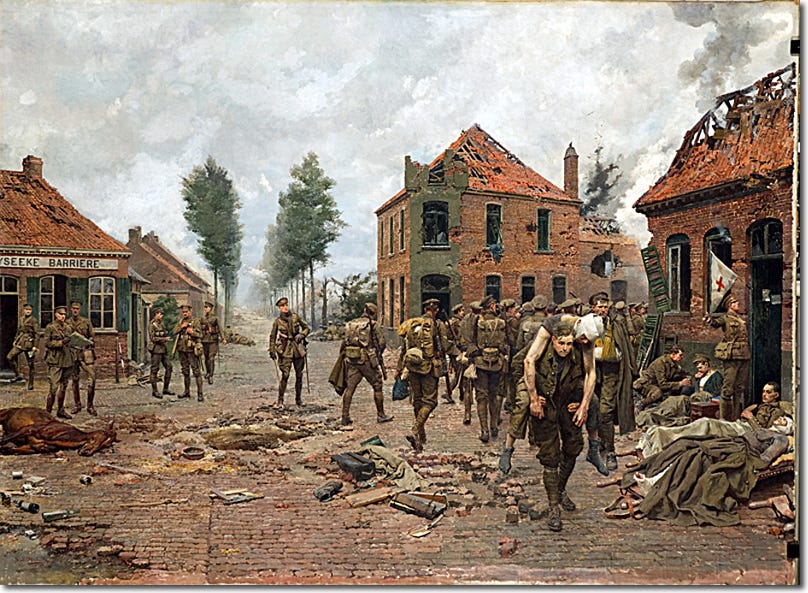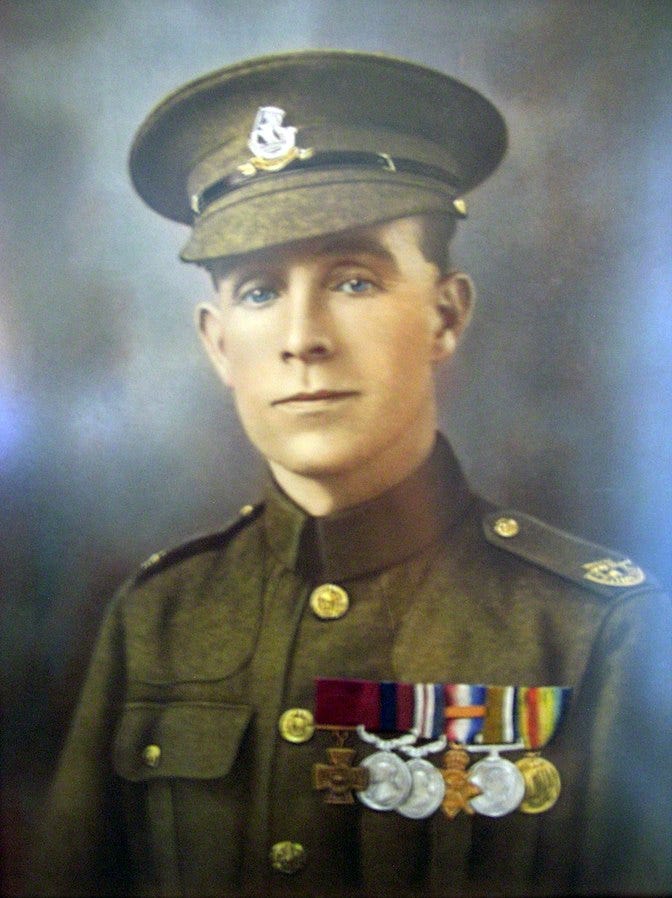Fact or Fiction: The British Soldier who spared Hitler during WW1
Among rubble and ruin, a wounded and dishevelled German soldier stumbles to his feet. He quickly realises his dangerous predicament as he stares down the barrel of a gun aiming squarely at him. In an incredible act of mercy, the British soldier lowers his weapon. After a quick nod of gratitude, the German soldier makes haste.
The German was none other than Adolf Hitler, the future dictator of Germany who was then a 29 year old Lance Corporal. The British soldier was Henry Tandey, a decorated war hero and recipient of the Victoria Cross. Most history buffs will no doubt be familiar with this intriguing tale of fate that begs the question - what if? What if the soldier pulled the trigger, would World War 2 and the horrors of Nazism have been prevented?
Well, according to Dr David Johnson, the story is actually urban legend. Dr Johnson penned the biography of Tandey and during his research uncovered a number of holes in the story.
Hitler’s association with Tandey began during a state visit by the then British Prime Minister, Neville Chamberlain, to Germany. During the visit Chamberlain noticed a painting which adorned Hitler’s study at the Berghof, his residence in the Bavarian Alps. The painting, known as the Menin Crossroads, depicts a group of soldiers stood on war-torn crossroads. One soldier is carrying a wounded enemy on his back, this soldier was said to be Henry Tandey.
When asked about the painting, Hitler claimed to have been saved by the very same British soldier. "That man came so near to killing me that I thought I should never see Germany again…providence saved me”, Hitler professed.
The story follows that Chamberlain telephoned Tandey to inform him he had saved Hitler’s life some twenty years ago. Tandey was sceptical as he had spared the lives of a number of wounded enemies during his service and could not confidently recall Hitler as one of them. As such, he wanted more information to confirm things.
It seems over time Tandey came to accept he had been the man who decided Hitler’s fate in 1918. When interviewed outside his bombed home as World War 2 ravaged Britain, he lamented "If only I had known what he would turn out to be”.
But there are crucial historical details which cast doubt on this infamous tale. The first major discrepancy is that Hitler and Tandey were highly unlikely to have crossed one another’s path. Their respective units were deployed close to one another only twice during the conflict.
First, during the Battle of Ypres between October-November 1914. Then again in September 1918. It is the latter when Hitler was supposed to have had his brush with death - on 28th September to be exact.
However, as Dr Johnson points out, records at the Bavarian State Archives show Hitler was on leave between 25th and 27th September. On the 28th he was “either on leave or returning from leave at the time or with his regiment 50 miles north” of Tandey’s unit. What’s more, British Telecom Archives revealed Tandey never had a telephone.
Hitler also never mentioned the incident in his letters to his family. Dr Johnson concludes the whole story was a myth, concocted by the Nazi leader to cultivate his image as an agent of providence, whose destiny was to serve the German people. Indeed, Hitler preached this message when he survived an assassination attempt by Claus Von Stauffenberg in 1944.
Fact or Fiction?
Dr Johnson is likely correct when he argues Henry Tandey was not the man who spared Hitler’s life. The two men simply were not close enough for it to have happened. Hitler’s claims to have recognised Tandey from the painting as the man he met in 1918 are doubtful considering 1) Tandey would have been unkempt, covered in mud and thus unlike his appearance in the painting 2) the painting shows a battle from 1914, not 1918.
So, the story that it was Tandey who spared Hitler is ‘fiction’, or rather, unsupported by the evidence. It is likely a fact that Hitler’s life was spared by an enemy soldier he encountered. The idea of Hitler as a messianic figure with divine protection was certainly a propagandistic ploy of the Nazi regime, used again and again. But this was a painting which hung in his private study - the Berghof itself was frequented by few people, never mind Hitler’s personal study.
It was Chamberlain who raised it to Hitler, not the other way around. The story did not feature in Nazi propaganda messages expounded to the masses. There is a high probability Hitler did indeed have the experience of being saved and genuinely believed, albeit mistakenly, that he was saved by Tandey.
It was not a fabrication by the despot. Unfortunately for Tandey, he lived with the unique remorse and guilt that had he pulled the trigger, one of history’s most horrific tyrants may not have come to be. Ultimately, it seems the guilt was someone else’s to hold.
Next week’s article will be on the dark but lucrative world of circus ‘freakshows’.





